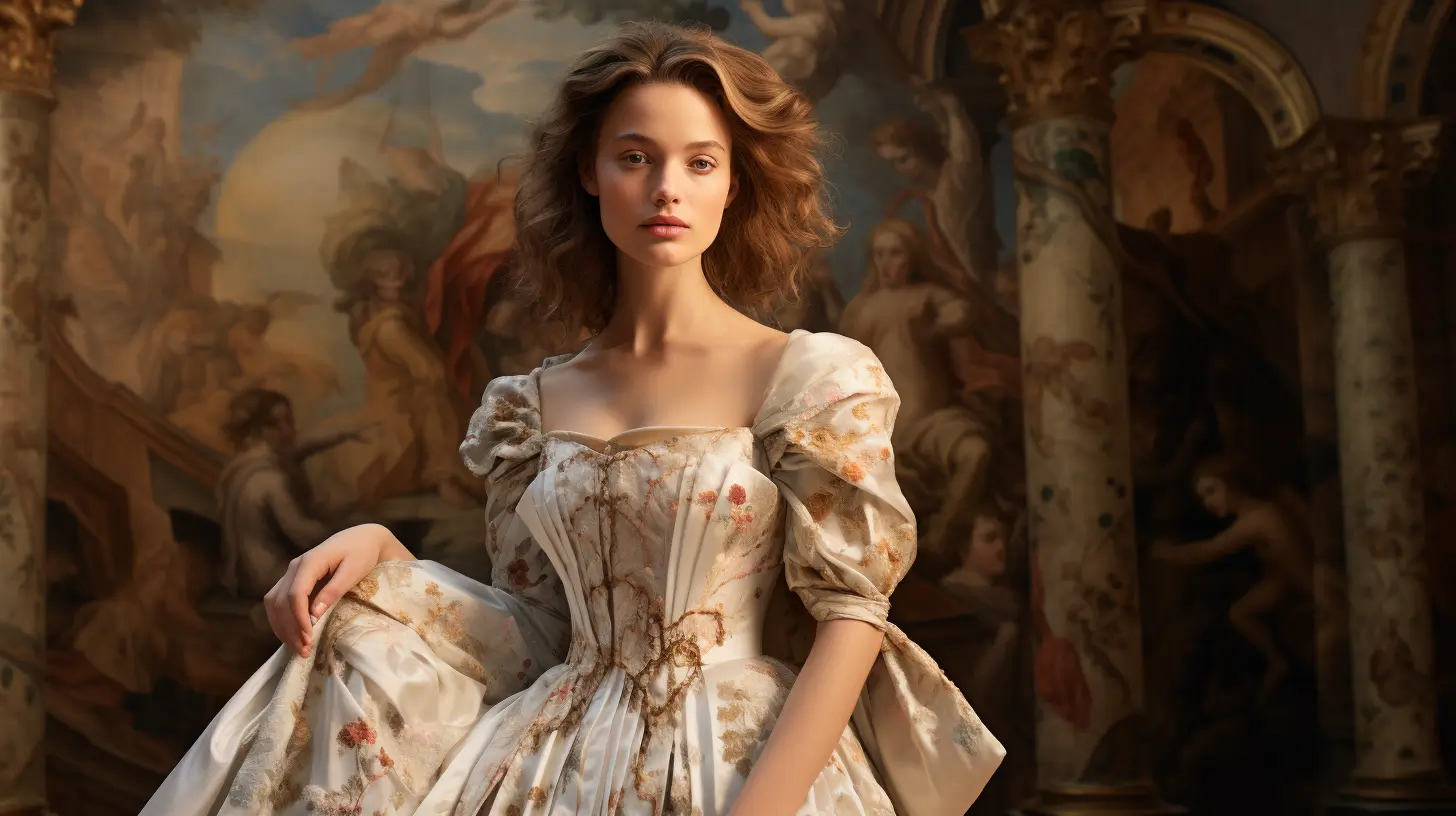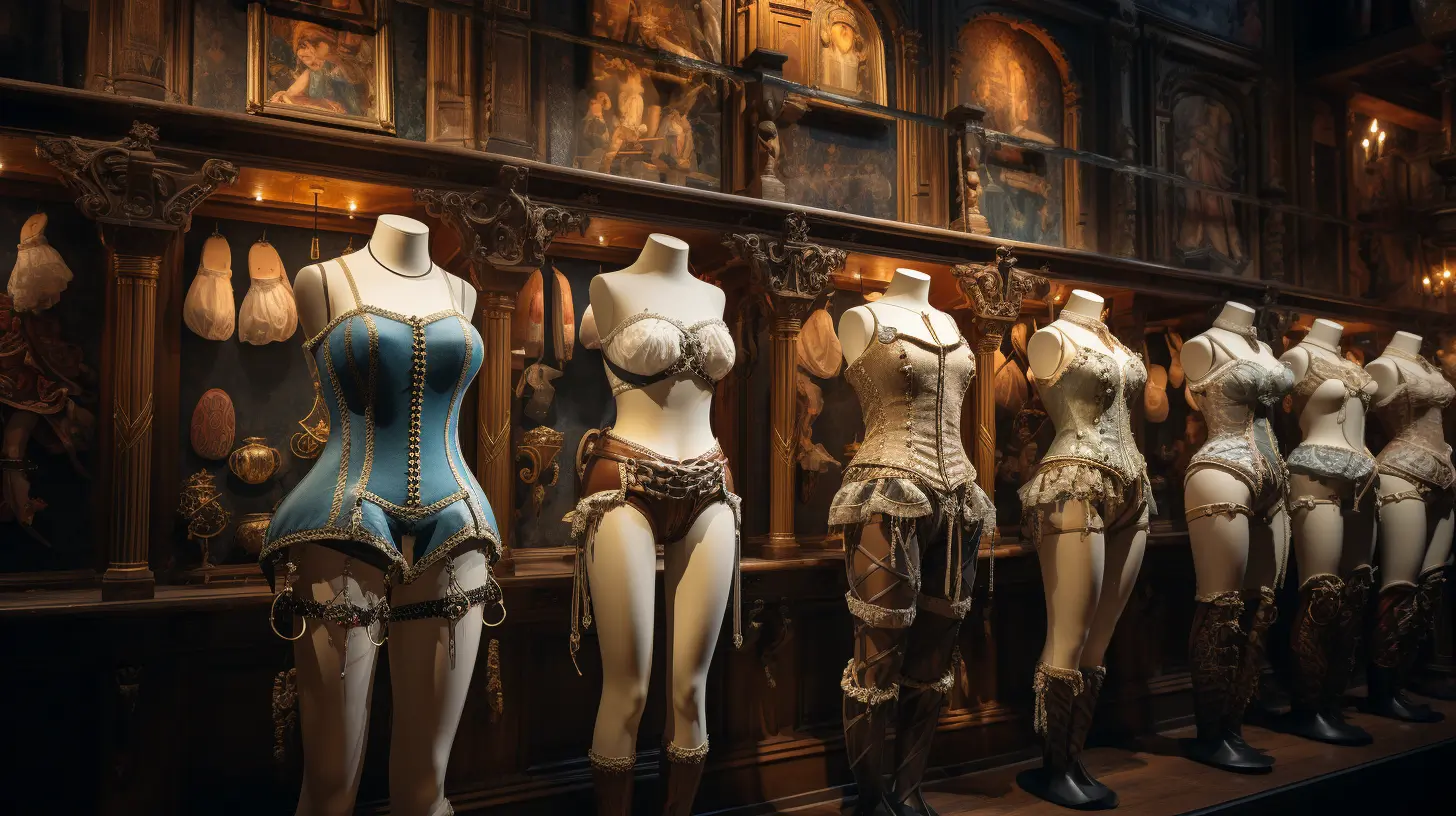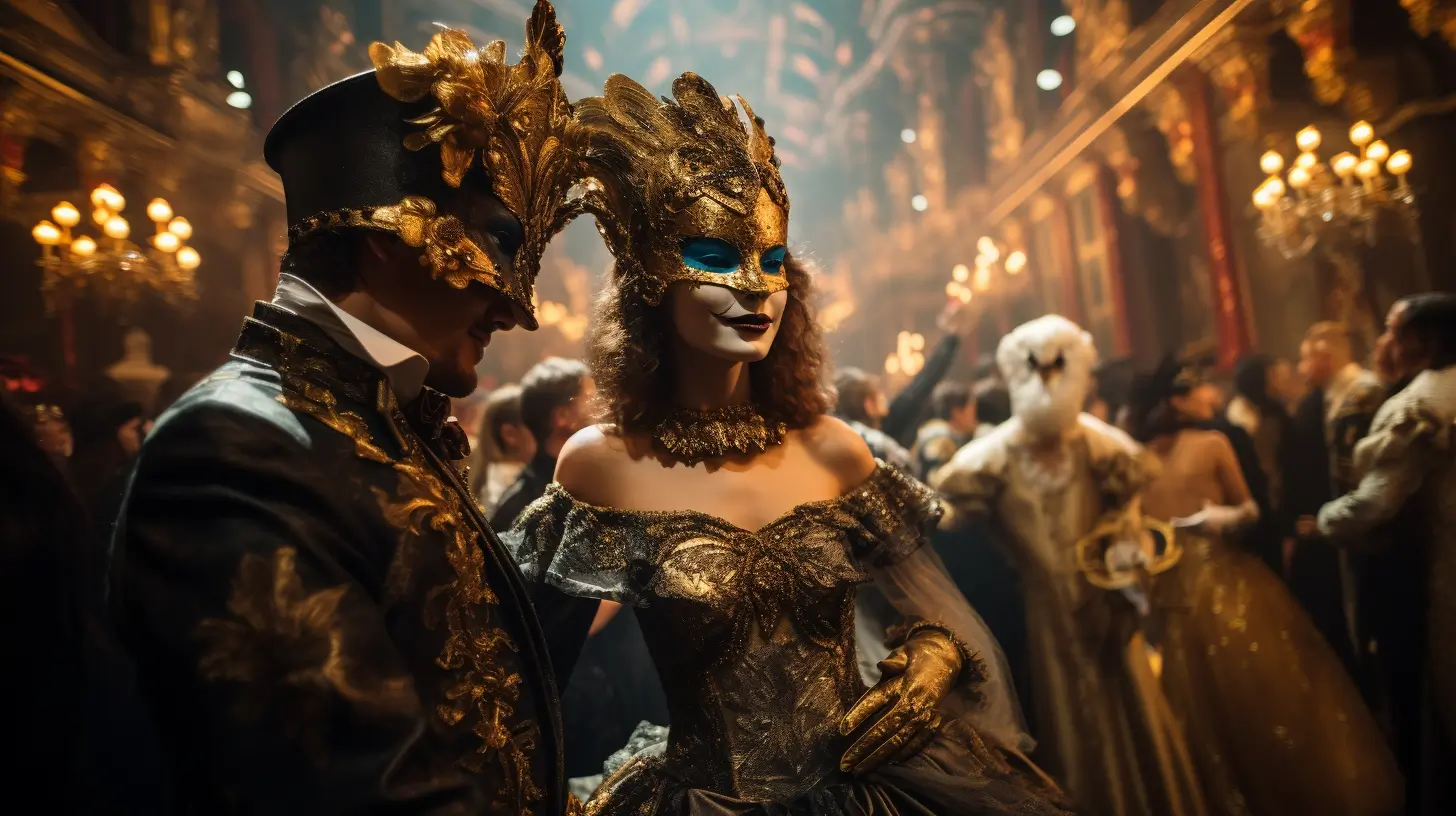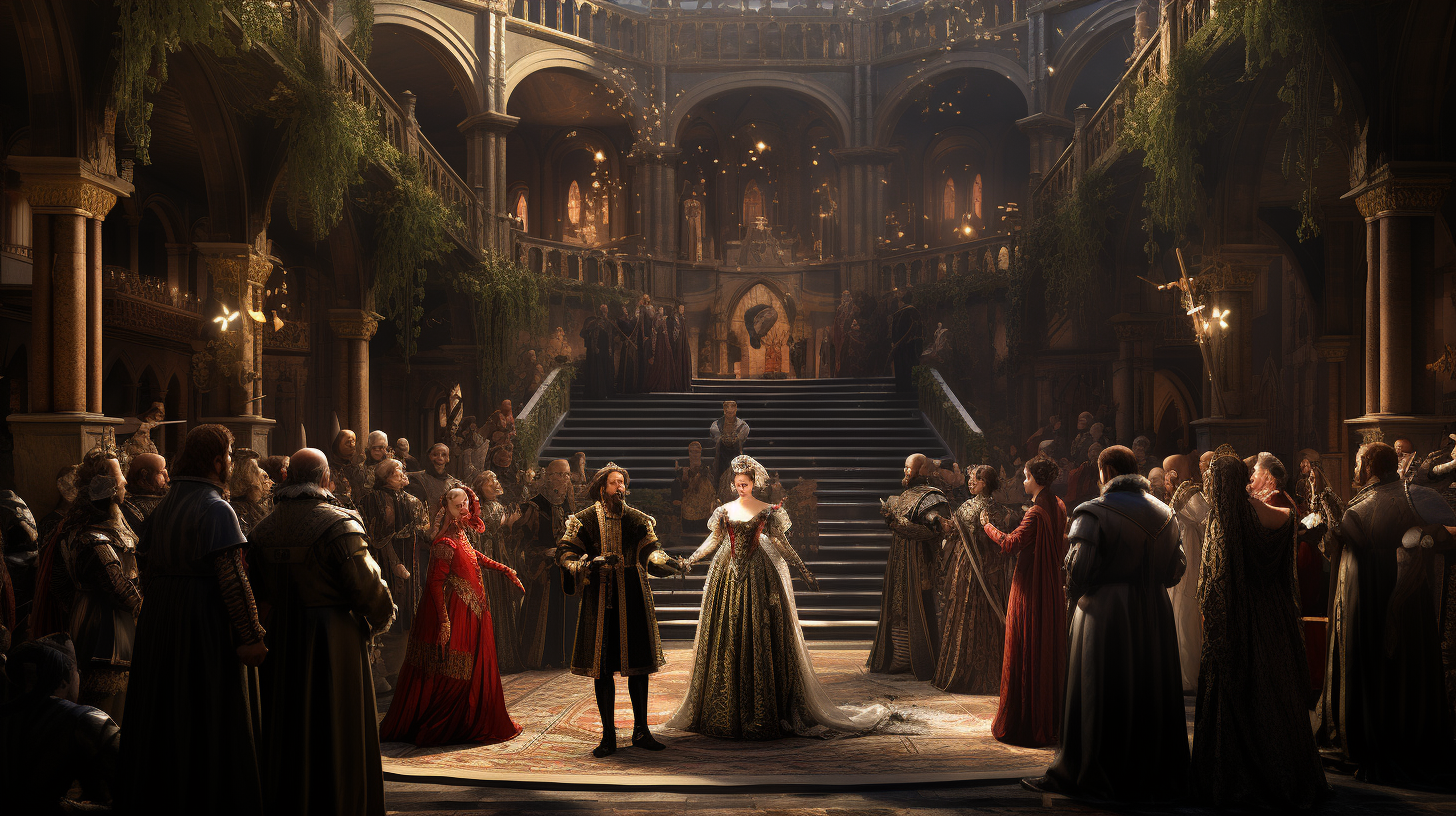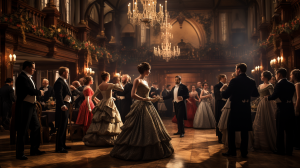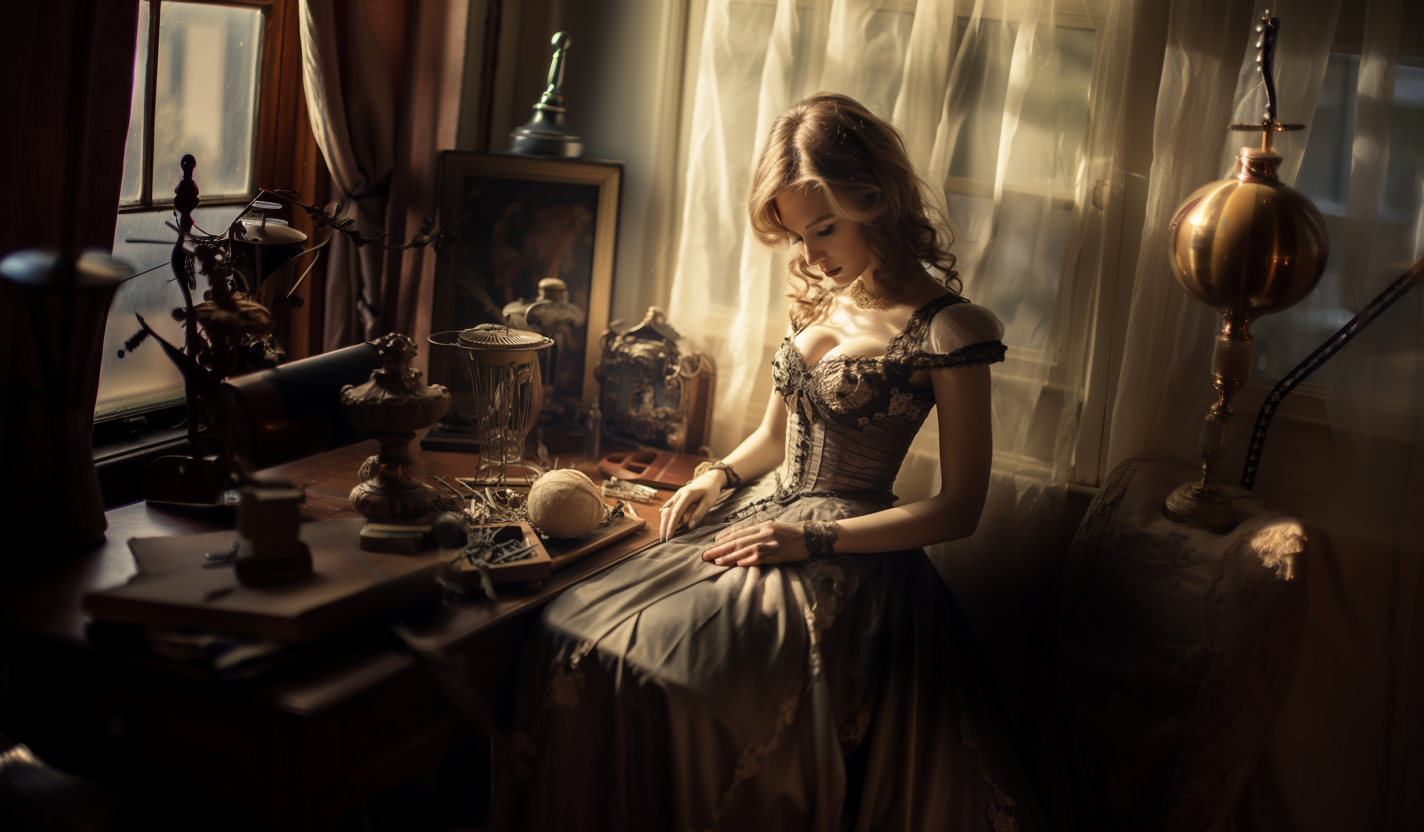
Embracing Elegance: The Edwardian Corset’s Whisper from the Past
Imagine a time where fashion was not just about trends, but a defining feature of society’s identity. Where dressing was not merely a daily routine but a meticulous art of sculpting the human silhouette. The Edwardian Corset, a garment of both grace and debate, cinched waists and shaped destinies during a period rich with social transformations and cultural refinements.
The turn of the 20th century heralded a new age for women’s fashion. The S-bend corset, or what we recognize as the Edwardian Corset, became the emblematic symbol of this era’s chic and style. Unlike its predecessors, this garment was not just an accessory; it was the very foundation upon which the day’s attire was built, molding the body into an idealized form that echoed the societal expectations of the time.
Beneath the Surface of Style
Diving beneath the frills and finery, one finds a world of complexity. The Edwardian corset was crafted from a tapestry of rich fabrics and sturdy boning, with intricate lacing patterns holding whispered secrets of the wearer. This was a time where the construction of a garment could speak volumes of one’s status and the subtle, yet persuasive, influence of fashion trends that swept through the cobblestone streets of the old world and the burgeoning cities of the new.
The Heartbeat of an Era
The corset was not merely cloth and string; it was the rhythm of an era’s heartbeat, a reflection of the changing tides in society’s ocean. From the suffragette movement to the whispers of war, the Edwardian Corset bore witness to a world on the cusp of transformation, both confining and releasing in its embrace.
🖼 For a visual to accompany this introduction, a graphic designer might create an image of a sepia-toned room with soft, natural light spilling through lace curtains onto an ornate dressing table. Upon it lies an open corset, ivory with hints of lace and satin ribbons, its intricate boning and lacing patterns visible, awaiting the day’s adventure.
Historical Backdrop of Edwardian Fashion
The Social Fabric of the Time
At the dawn of the 20th century, the world was a stage of rapid change. Industry boomed, empires expanded, and society’s upper crust reveled in unprecedented luxury. Edwardian fashion emerged from this crucible of change, mirroring the period’s mix of stringent social norms and a creeping desire for modernity.
The Edwardian Silhouette
Beneath layers of lace and linen, the Edwardian Corset sculpted the era’s quintessential S-bend silhouette. Unlike the straight-fronted corsets of the past, these were engineered to push the chest forward and the hips back, creating an elegant, if not precarious, ‘S’ shape that was as much a fashion statement as it was a nod to social status.
Technological Advances in Corsetry
New inventions and materials allowed for more complex corset designs. The introduction of the metal busk fastening gave women the power to dress independently, freeing them from the necessity of a maid’s assistance. Yet, such innovations were a double-edged sword, offering freedom while reinforcing the restrictive beauty standards of the time.
Changing Tides in Women’s Rights
The corset also found itself at the center of a societal struggle, with the women’s suffrage movement gaining momentum. Activists argued that the tight lacing and rigid boning were not just physical constraints, but symbols of the societal pressures women faced, sparking debates that would ripple through fashion and culture.
📷 Placeholder for image: Capture the dichotomy of Edwardian society with a juxtaposed image. One side shows the opulence of a high society ball, women in lavish gowns with cinched waists. The opposite reveals a suffragette rally, banners in hand, advocating for women’s rights, corsets not in sight.
Having traced the “Historical Backdrop of Edwardian Fashion,” we will next weave through the “Materials and Construction of Edwardian Corsets,” uncovering the craftsmanship behind the constrained beauty. Eight sections remain, with the threads of history guiding our journey before we reach our conclusion.
Anatomy of Edwardian Corsets
Materials and Fabric Choices
In the pursuit of the perfect hourglass figure, Edwardian corsetry was a marvel of textile artistry. The choice of materials was a testament to the era’s indulgence and opulence. Satins, silks, and coutil (a sturdy woven fabric specifically made for corsets) were staples. For the elite, corsets weren’t just undergarments but symbols of wealth, with fabrics often imported from exotic locales and adorned with intricate lace and delicate embroidery.
Boning and Structure
The skeleton of these iconic waist cinchers, the boning, was meticulously crafted. While early corsets were stiffened with whalebone, Edwardian innovation turned to newer materials like steel. This not only offered unmatched waist reduction but also a level of durability that previous materials lacked. The bones curved and contoured, creating not just a garment but an architectural feat that defined the female silhouette of the time.
Lacing Techniques and Patterns
Lacing was the lynchpin of corsetry, quite literally shaping the garment to the wearer’s body. Edwardian corsets often featured complex lacing systems designed to evenly distribute tension. ‘Spiral lacing’, a method using one continuous lace crisscrossing up the back, allowed for tighter and more precise adjustment. This was not merely functional but also an art form; the patterns it created were both beautiful and a subtle indicator of one’s personal style and station.
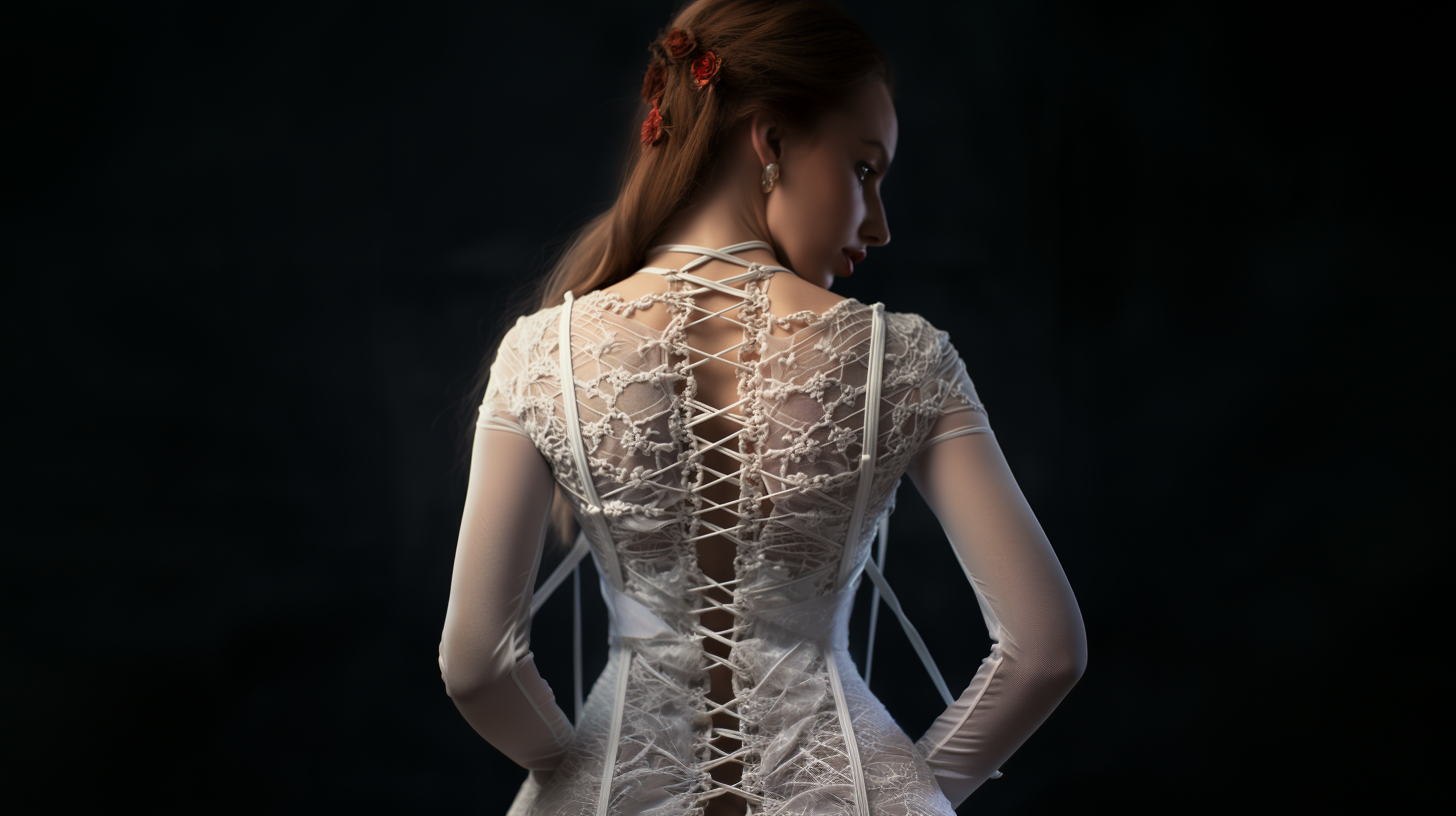
[ image: A close-up, photorealistic illustration of an Edwardian corset’s back, emphasizing the lacing. Highlight the cross-pattern with the sheen of the satin ribbon against the matte texture of a pale silk corset, embroidered with fine ivory thread.]
The Craft of Corset Making
Artisan Techniques vs. Industrial Production
The dawn of the 20th century was an era of dichotomies in corsetry, marked by the tension between the traditional artisanal techniques and the burgeoning industrial production. Hand-crafted corsets were considered a luxury, often tailored by a skilled corsetière who would painstakingly stitch each panel and bone channel with precision. These were bespoke masterpieces, a far cry from the mass-produced versions that began to emerge from factories. The latter brought corsetry to the everyday woman, but often at the expense of the personalized fit and exquisite detailing that characterized artisan-made pieces.
Tailoring for the Masses vs. Bespoke Creations
Accessibility marked the significant difference between tailor-made and off-the-rack corsets. Bespoke corsets were tailored to the individual’s measurements, designed to enhance and flatter each unique form. In contrast, industrial production aimed to fit general sizes, which could lead to less comfort and a standardized silhouette. Despite this, the democratization of fashion was underway, and corsets were no longer just for the upper echelons of society.
The Life of a Corsetière
The role of the corsetière was both an art and a profession. These artisans worked with the intricacies of the female form, becoming confidantes and advisors to their clients. They needed not only to understand the technicalities of construction but also to possess a subtle intuition for their patrons’ desires and societal expectations. The life of a corsetière was one of unsung artistry, shaping the fashion and norms of the Edwardian era from the shadows of their ateliers.
📷 Placeholder for image: Envision a cozy Edwardian atelier, with warm, golden light casting shadows on the walls lined with various corsets. A corsetière is centered, meticulously hand-embroidering floral motifs on an ivory corset draped on a mannequin, her tools arrayed around her.
Feminine Ideals and the Corset
In the elegant parlors and bustling streets of the Edwardian era, the corset was not merely an undergarment but a powerful symbol of femininity. It sculpted the body into the then-ideal ‘S’ curve silhouette, a physical embodiment of societal expectations of beauty. Women from all walks of life were cinched into these garments, striving to attain an hourglass figure that was not just fashionable but a marker of one’s morality and status. Edwardian corsets underscored the prevailing notion that beauty and virtue were intertwined, often at the expense of comfort and mobility.
Class Distinctions and Accessibility
Edwardian corsets also served as a marker of class. For the wealthy, a corset was a sign of refinement and leisure, often handcrafted and exquisitely detailed, signaling the wearer’s affluence. Conversely, the working-class women wore more practical versions, simpler in design but equally indicative of the era’s social norms. The production of corsets on a larger scale due to industrial advancements made them more accessible, blurring the lines between classes while still serving as an indicator of social standing.
The Health Debate: Risks vs. Beauty
The restrictive nature of Edwardian corsets sparked a health debate that is still referenced in modern discussions on fashion and wellbeing. On one side, medical professionals of the time warned against the dangers of excessive waist constriction, citing issues like organ compression and compromised breathing. On the other side, the societal obsession with the ‘perfect figure’ often overrode these concerns, with women enduring the risks in pursuit of the beauty ideal. This tension highlighted a complex dialogue between personal agency, societal expectations, and the pursuit of health versus beauty.
🖼 Placeholder for Image: A contrasting illustration showing two women – one, a high-society lady in a luxurious, bone-laced corset, standing in a poised manner; the other, a working-class woman in a simpler, more functional corset, engaging in daily labor. The background splits the image, one side depicting an affluent parlor, the other a modest working environment.
Symbolism in Literature and Art
The Edwardian corset is a recurring motif in the literary and artistic narrative of the era, often symbolizing the constraints placed upon women by society. In literature, the corset frequently represented the tension between a woman’s personal desires and societal expectations. Paintings and illustrations from the period depict the corseted figure as both a subject of aesthetic admiration and a critique of fashion’s impositions on the female form. These works provide a dual commentary: they capture the beauty ideals of the time while also subtly challenging the constraints those ideals enforced.
Corsets in Popular Media and Advertising
Turn the pages of an Edwardian magazine, and you’ll find the Edwardian corset celebrated as an indispensable accessory of the modern woman. Advertisements portrayed it as the epitome of elegance, promising to transform any figure into the desired ‘S’ shape with promises of romance and social success. This era marked the dawn of aggressive marketing strategies, with corset manufacturers appealing to women’s aspirations and insecurities, ensuring the garment’s place as a staple in the collective feminine wardrobe.
Global Influence and Variations
The influence of Edwardian corsets extended well beyond the borders of Europe and America. Colonial trade and global exhibitions introduced this fashion to different cultures, leading to a fascinating exchange and adaptation of styles. In some regions, traditional garments underwent a metamorphosis, incorporating corset-like structures to conform to the Edwardian silhouette, while in others, local forms of body modification and dress retained their dominance, creating a global tapestry of fashion and influence.
🖼 Placeholder for Image: A stylized montage showing Edwardian corset advertisements, juxtaposed with global variations. The imagery should transition seamlessly from Western models in corsets to culturally diverse interpretations, highlighting the global influence of the garment.
Revivals and Contemporary Interpretations
In the swirling cosmos of fashion, the Edwardian corset has experienced a gravitational pull back into modernity. Designers look to the past, seeking inspiration from the intricate detailing and silhouette-shaping prowess of historical garments. The result? A celestial fusion where vintage design elements meet modern sensibilities. Contemporary fashion lines feature corsets that retain the aesthetic of their Edwardian antecedents, yet are reimagined for today’s wear, offering comfort without compromising on style. 🌟
Corsetry in Haute Couture
Venture into the nebula of haute couture, and you’ll witness the Edwardian corset transformed into an astronomical display of craftsmanship. Top-tier designers incorporate the structured elegance of corsets into avant-garde creations, showcasing them on the runways as both standalone pieces and integral parts of complex ensembles. In this universe, the corset is no mere undergarment but a shining star, a focal point around which entire collections may revolve. 🚀✨
The Corset’s Impact on Modern Body Image
As we orbit the discussion of body image, the legacy of the Edwardian corset casts long shadows. Today’s society grapples with the paradox of body positivity and the allure of the ‘ideal’ shape. The corset, with its power to sculpt and constrain, serves as a metaphor for the societal pressures that still exist regarding body form. Yet, it also represents autonomy and self-expression, as individuals harness its transformative energy to shape their identity as they see fit, much like we mold our understanding of the universe around us. 🌌
🖼 Placeholder for Image: A haute couture runway scene where a model is adorned in a modern gown with an Edwardian-inspired corset, the stars above echoing the garment’s boning patterns.
Diaries and Letters: The Personal Experience
Imagine the gentle rustle of taffeta as we open the delicate pages of history, where women of the Edwardian era confided their thoughts to diaries and letters. These are the fabrics of their lives, intricately woven with tales of daily corset wear. Each entry a stitch in the vast quilt of personal experience, the Edwardian corset binding not only their waists but also their shared narratives. 📜✒️
Iconic Figures and Their Corset Stories
Like the timeless little black dress, some stories never fade from fashion. Iconic women of the time, from royalty to the rising stars of the silver screen, all donned the Edwardian corset, each with a tale as unique as a couture gown. Their accounts offer us a glimpse into the closets of the past, revealing their intimate relationship with corsetry, a mix of adoration and, at times, a longing for liberation. 👑🎬
Public Perception and Critiques
The public eye, much like the critical eye of a designer on a new collection, observed and commented on the corset with both scorn and admiration. Editorials of the era often reflected society’s fascination and critique, mirroring the contrasting reviews one might find in a modern fashion magazine. The Edwardian corset stood as a testament to beauty and oppression, a dualism that provoked endless debate. 🗣️💭
🖼 Placeholder for Image: An elegant Edwardian salon, where a group of women are gathered, some in corsets, amidst an array of diaries and letters scattered elegantly across a chaise lounge, suggesting a scene of shared secrets and stories.
Museums and the Role of Conservation
In the hallowed halls of our world’s great museums, a profound silence envelops the glass cases where the Edwardian corsets rest. These garments, once a second skin to the women of a bygone era, are now priceless artifacts, deserving the utmost care. Conservationists work with the precision of a master tailor, ensuring that these delicate pieces of history are preserved. They stitch time itself, preventing the future from unraveling the past. 🏛️🖼️
Collecting Antique Corsets
To collect an antique corset is to possess a thread from the tapestry of history. Collectors, both erudite and amateur, pursue these historical garments with a fervor akin to art connoisseurs. Each corset, a sculpture of fabric and boning, carries the imprint of its era, and to preserve it is to honor the craftsmanship and stories woven into its fibers. 🎩🔍
The Relevance in Historical Costume Studies
The academic realm, with its rigorous study of costume history, regards the Edwardian corset as a pivotal chapter in the narrative of fashion. Through these studies, we unravel the social, economic, and political threads that compose the garment’s context. They are not mere attire but are seminal to understanding the societal constructs of their time. These corsets are the textbooks of fabric, binding the past to the present. 📚✨
🖼 Placeholder for Image: A meticulously organized archive, with rows of preserved Edwardian corsets on display, their intricate lacing and elegant fabrics telling a silent story of the era they adorned.
A Love Letter to Corsets
Ah, the corset—how it speaks to the soul! It is not merely a garment but a testament to the human desire for form, the pursuit of beauty that transcends the mere fabric and boning. As Mr. Pearl, whose hands have crafted contours and silhouettes that defy the ordinary, I see each corset as a love letter to the body, a sculpture that bends to the will of both wearer and creator. 💌
With every tightening of the lace, there is a whisper, a conversation between the corset and the skin it embraces. It is an intimate dance of push and pull, of tension and release. A corset is not just worn; it is experienced. It molds not only the body but also the spirit, encapsulating dreams and the very essence of grace. 🌹🎀
Each panel, each stitch resonates with a passion for an era when elegance was paramount, and the silhouette was the canvas for a tailor’s artistry. The corset is a bridge to the past, an anchor that tethers the whirlwind of fashion to the bedrock of history. In my hands, the fabrics sing, the boning takes shape, and the design becomes a living, breathing homage to the Edwardian elegance that once swept through society’s halls. ✨
And yet, it is not just about looking back; it is about bringing that timeless allure into the present, to be reimagined, reinvented, and reintroduced. To wear a corset is to adorn oneself in history, to make a statement that is both personal and universal—a declaration of identity that is as much about the future as it is about the past. 💃🌟
The Last Cinch: Edwardian Corsetry’s Timeless Echo
In the soft, contemplative light of the present, we look back upon the Edwardian corset with a blend of awe and introspection. This era’s corsetry was not just a trend; it was a cultural hallmark, an embodiment of an age that still whispers its legacy to those who will listen. It’s the kind of whisper that Anthony Bourdain might liken to the distant murmur of a bygone city; it carries stories, secrets, and lessons down through the ages.
The silhouette of the Edwardian woman—cinched waist, poised posture, an air of both delicacy and strength—casts a long shadow over the landscape of fashion history. These corsets were the exoskeletons of societal norms, the armor in a silent battleground of aesthetics and health, of freedom and restraint. They shape not just the spines but the very narrative of women’s history.
As we stand at this crossroad of past and present, we realize that Edwardian corsetry is more than just an artifact. It’s a continuous conversation, evolving with each generation that rediscovers and redefines its meaning. We find that dialogue in the way modern designers borrow its lines, in the echo of its structure in contemporary fashion, and in the ever-present debate about the female form within society’s gaze.
So, we invite you, the reader, to lace into this dialogue, to pull the threads of this narrative through the eyelets of your own perspectives. Share your stories, your insights, and your questions. The dialogue is as vital today as it was over a century ago because it is not just about a piece of clothing; it’s about identity, autonomy, and expression.
This conversation is our inheritance from the Edwardian era—a rich tapestry to which we each add our own thread, our own color, our own texture. And just like the corsets of old, this dialogue is designed to be tightened and loosened, reshaped, and reformed as we continue to explore the vast and intricate world of fashion history.
With this conclusion, we have completed our journey through the landscape of Edwardian corsets. We have unwound the laces of time to explore this iconic garment from every angle. Now, it is over to you to continue the exploration and keep the legacy alive.


